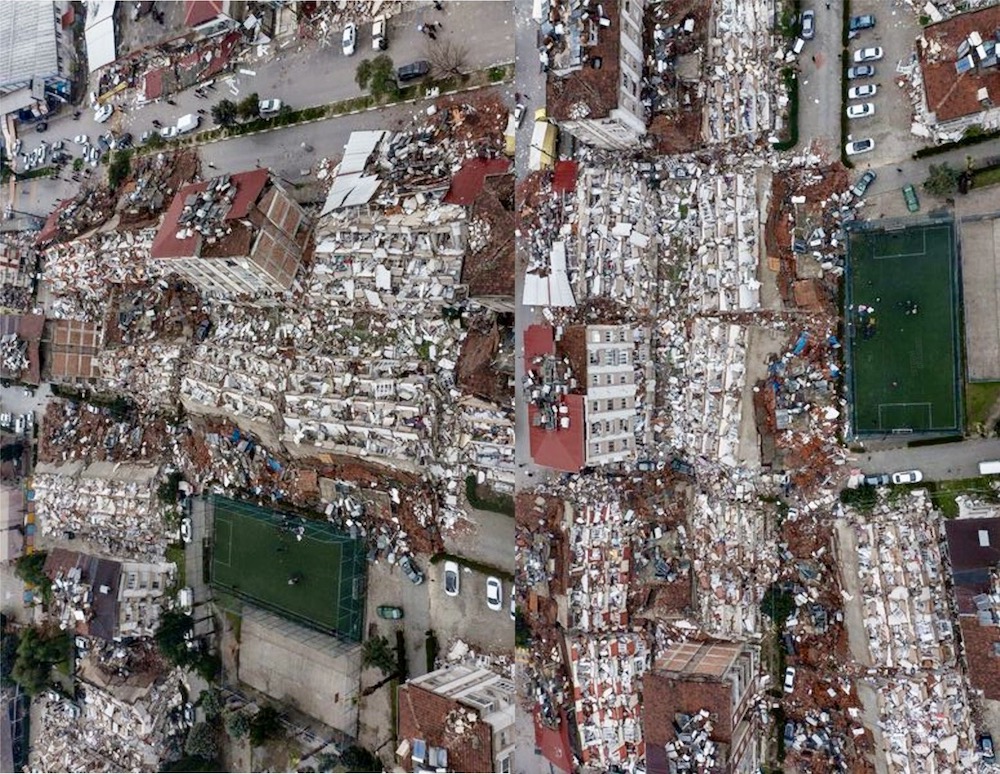by Gyaneshwar Dayal
Earthquakes cannot be predicted because geologists are still limited to studying the Earth’s surface and haven’t been able to study the planet’s crust, a hundred km below where the earthquakes originate.

It is said that when a major earthquake happens anywhere, fear strikes everywhere. There is no place on earth that is not quake-prone. In some places, it might be more, and in some, less.
India is the third-largest earthquake-prone country globally, after Japan and Nepal. Within India, the Himalayas are the most quake-prone zone. According to the National Centre for Seismology, nearly 59% of India’s landmass is prone to earthquakes at varying intensities. As many as 11 cities and towns in about eight states and Union Territories fall within Zone-5, the highest one, and the capital city Delhi in itself is categorized in Zone-4.
The vulnerable states/UTs include Jammu and Kashmir, Gujarat, Himachal Pradesh, Bihar, Manipur, Assam, Nagaland, and Andaman and Nicobar Islands.
The capital Delhi is located near three active seismic fault lines – Sohna, Mathura, and Delhi-Moradabad. Gurugram is the riskiest area in Delhi-NCR, being situated around seven fault lines. If these get activated, a high-intensity quake that could wreak havoc is unavoidable. The capital, in particular, would experience changes in the tectonic plates as it is close to the Himalayas. The central Himalayan region is among the most seismically active zones globally.
For over 700 years, the region has been under tectonic stress, which could potentially be released in the coming years, as indicated by a study.
Seismologists believe that the tremors are a manifestation of the convergence between the Indo-Australian and Asian tectonic plates that built the Himalayan mountains in the last 50 million years. Any mega earthquake will have a magnitude upwards of 8 on the Richter scale and can occur anywhere between Dehradun to Kathmandu, and its impact can be felt in the entire Gangetic plains and massive Indian cities like Delhi NCR, Shimla, Patna.
Since tectonic tension builds up over a long time before it can be released, it is believed that strong earthquakes follow a ‘seismic cycle.’ For instance, after a region has faced an earthquake of magnitude 7 or higher, it takes decades for another earthquake of a similar size to strike the same location. On the other hand, if a region hasn’t seen a sizable earthquake in a while, the likelihood of one occurring is very high.
Earthquakes cannot be predicted because geologists are still limited to studying the Earth’s surface and haven’t been able to study the planet’s crust, a hundred km below where the earthquakes originate. However, seismologists can make calculated guesses based on probability and larger geological patterns. It is by studying such patterns in the Himalayan Mountain ranges that seismologists Roger Bilham and K Khatri predicted the Great Himalayan Earthquake.
The two scientists were able to identify a seismic gap – the region where tectonic tension builds up because no earthquakes have occurred – in the central Himalayan region. According to the researchers, the Indian tectonic plate is moving along a significant fault beneath the Himalayas at a rate of around 1.8 centimetres per year. The absence of a massive earthquake in the central Himalayas in recorded history provides strong evidence that a significant amount of tectonic tension has built up in this region and is ready to be released.
According to seismologists, the Himalayas have not seen an earthquake over the magnitude of eight in over five hundred years. This has led to the accumulation of great amounts of strain between the Eurasian plate and the Indian plate. The last major earthquake in the Himalayan belt was the 2015 Nepal earthquake (7.3 M) which killed over 8,900 people preceded by the 2005 earthquake in Jammu and Kashmir (7.6 M) which took 87,000 lives. However, these weren’t enough to release the seismic stress.
According to Bilham and many other seismologists, the Great Himalayan Earthquake is inevitable. However, the exact date, as well as the epicentre of this earthquake, is still unknown. So, this earthquake can strike us tomorrow, the next year, or after a hundred years, no one can predict for sure. Moreover, while the central Himalayan region will be the most probable centre of the earthquake, the specific location is still unknown, and seismologists can only take an educated guess.
Dr N Purnachandra Rao, the chief scientist of seismology at the National Geophysical Research Institute, has warned that an earthquake similar in magnitude to Turkey quakes or even more is “imminent” in Uttarakhand and can happen “any time.” Tremendous stress continues to build under the Uttarakhand region, and it will inevitably be released as a massive earthquake in the area anytime.
“We are monitoring the situation in real-time. We have GPS networks in the area. GPS points are moving, indicating changes happening beneath the surface,” he said. There are around 80 seismic stations in the Himalayan region focused on Uttarakhand already smarting under sinking earth at several places. There is a good chance it will exceed a magnitude of 8 when it happens. These earthquakes are fairly periodic, and that’s how scientists currently predict when the next one could strike. Uttarakhand faces the brunt of this quite often. However, the state has not endured a “great earthquake” (magnitude 8 and higher) for over 100 years.
Incidentally, birds of all hues made loud noises and flew abnormally in flocks on the night before the big quake, indicating something unusual was going to happen. Unlike birds, humans have not developed such premonition.
(This write-up first appeared in Himalayan News Chronicle Vol-3, Issue-2 – February 1, 2023 – February 28, 2023. Views are personal.)
from Kashmir Life https://ift.tt/QjrFTMk
via IFTTThttps://kashmirlife.net
No comments:
Post a Comment